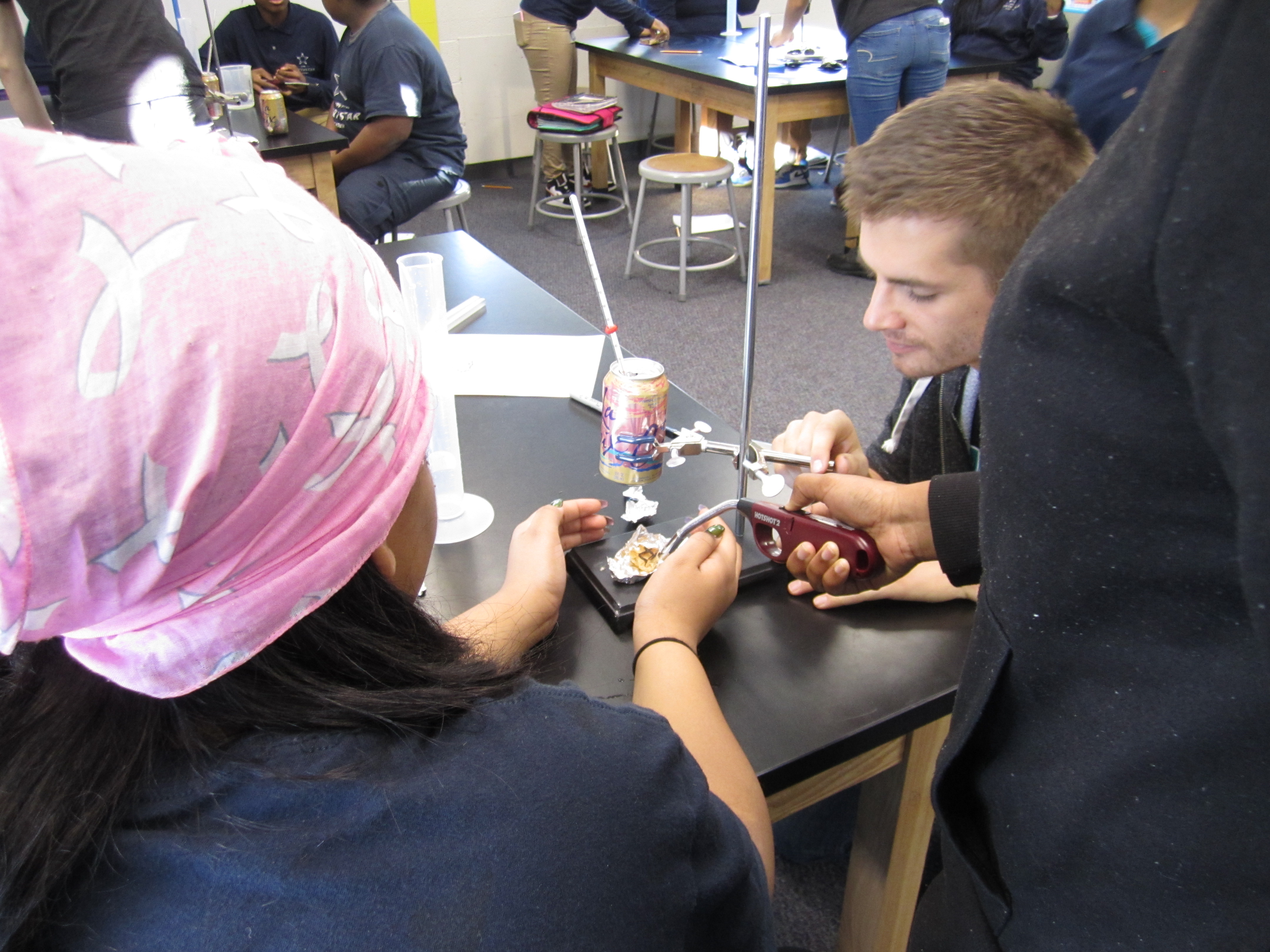
Today we learned about food to show the students how science ties into their everyday lives. During the introductory lecture, we discussed the three major macronutrients in food: carbohydrates (sugars), lipids (fats), and proteins. A short demonstration highlighted quick assays that can be used to test for these macronutrients. Although these assays are effective, they are impractical for normal use, so the students were introduced to nutrition facts and how these can be interpreted. In addition to the three major macronutrients shown on these labels, caloric content was visited as the key takeaway from nutrition facts. Students were shown the unit definition of a calorie, and we set out to discover how caloric content can be measured through a simple experiment.
For the experiment, we set up a simple calorimeter using a soda can with water. Students were provided a diverse set of foods to test. After igniting the food, it was allowed to burn under the calorimeter, transferring energy to the water. Students took measurements of food mass, water mass, and water temperature to calculate caloric content. They were encouraged to compare these values to nutrition facts, including comparing calories to macronutrient percentages.
Throughout the experiment, we stopped to discuss hypotheses, observations, and results. The students concluded that lipids contained more calories per gram than either carbohydrates or proteins. As a good proxy for calorie extraction in biology, they found that sugars burned out quickly, whereas fats and proteins took longer to release all of their energy. Additionally, the students learned that calories are neither “good” nor “bad,” and that the balance of calories in vs. out better describes good health.